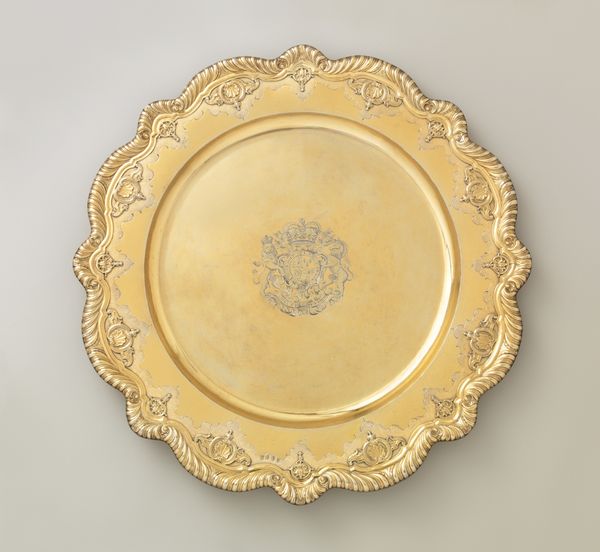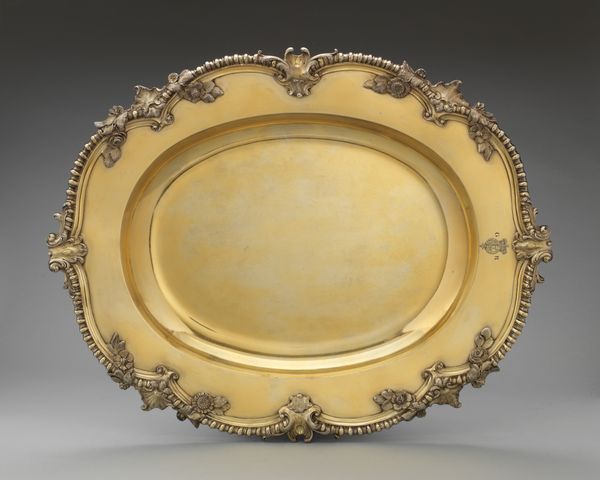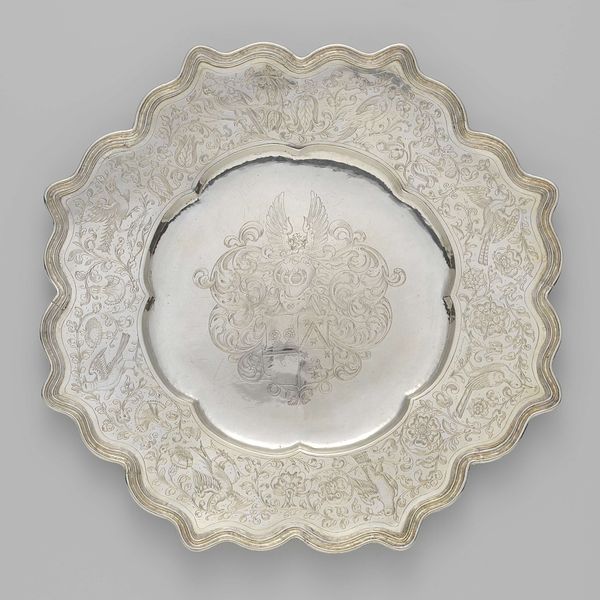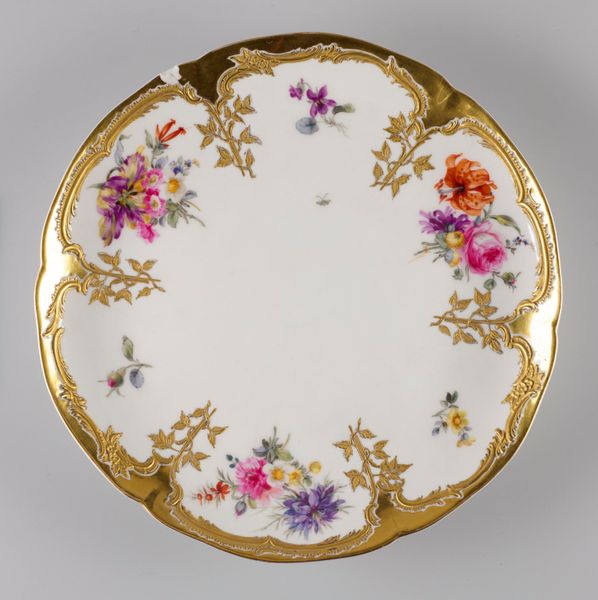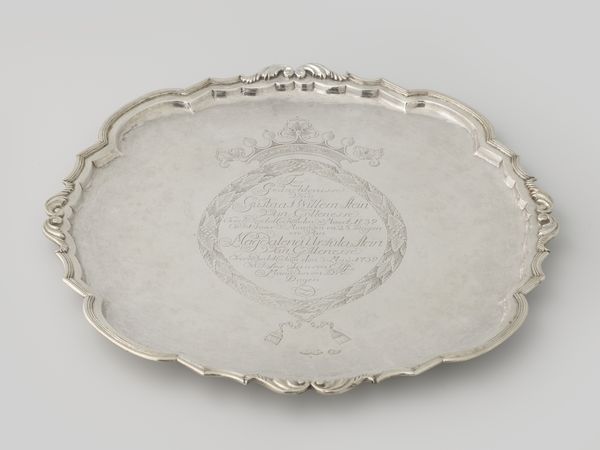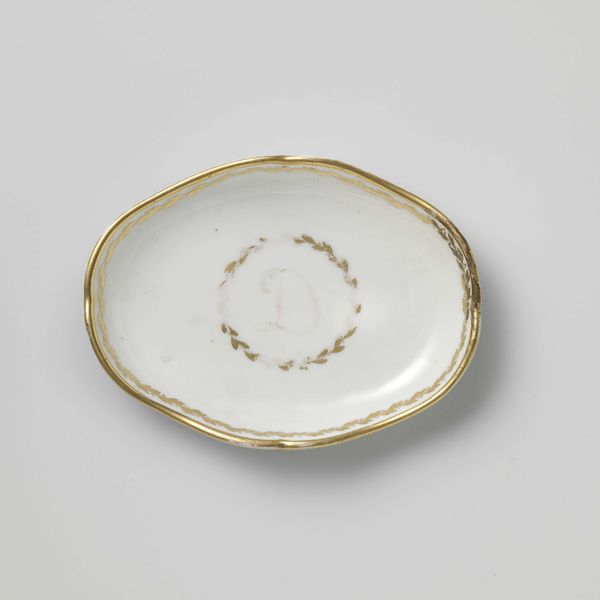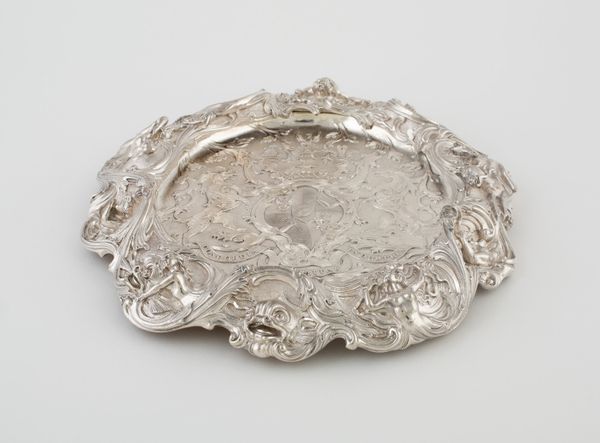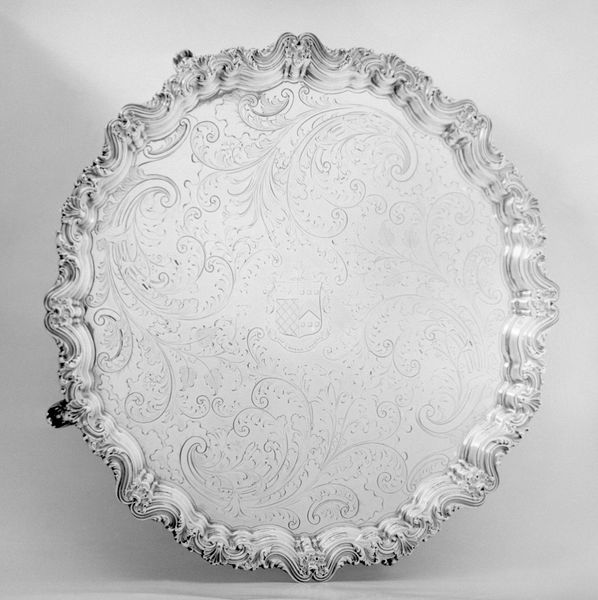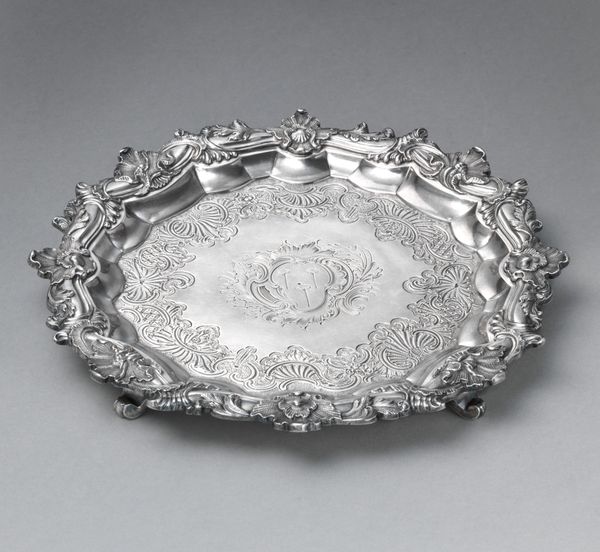
silver, metal, sculpture
#
silver
#
metal
#
sculpture
#
decorative-art
#
rococo
Dimensions: Width: 6 1/4 in. (15.9 cm)
Copyright: Public Domain
Editor: This is the "Salver," crafted from silver sometime between 1749 and 1751 by Gottlieb Satzger. I find its ornamental design to be quite captivating. How would you interpret this work and its decorative details? Curator: It's a fascinating example of Rococo design. The swirling, asymmetrical forms and the emphasis on ornamentation speak to a culture of courtly display. Think about how silver, as a material, accumulates meaning – status, wealth, even trustworthiness. Editor: So, the silver itself adds a layer of symbolism beyond just the design? Curator: Precisely. The intricate patterns – those shells and floral motifs – aren’t merely decorative. What do those details suggest to you? Where have you seen comparable features? Editor: Well, the shell patterns make me think of the Roman goddess Venus and other Rococo art I have viewed in Europe, so maybe a display of wealth. It is not religious like many other historical displays, it does carry those romantic elements though, through its connection to love. Curator: That's insightful! This blending of classical motifs with naturalistic forms became increasingly secular with the Age of Enlightenment in Europe and it reflects that shift. The objects became as much a work of sculpture as functionality. Editor: I hadn't considered the interplay of classical symbolism with the changing cultural context of Europe, I find how this shift is visible in decorative pieces really profound. Curator: Absolutely, even something seemingly simple like a salver carries so much cultural memory encoded in its form.
Comments
No comments
Be the first to comment and join the conversation on the ultimate creative platform.

